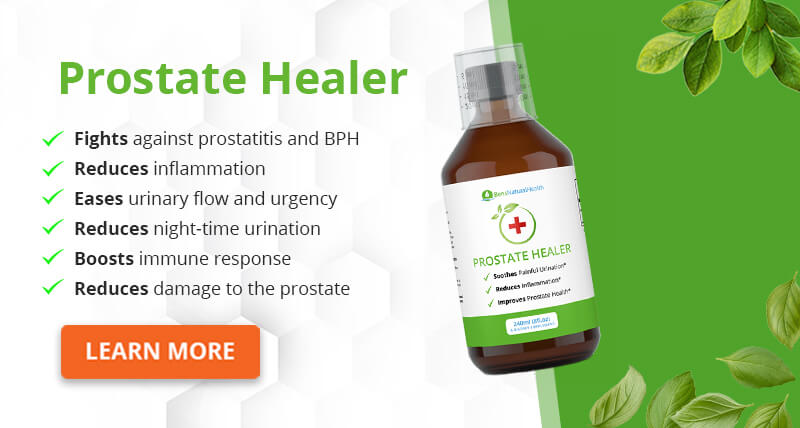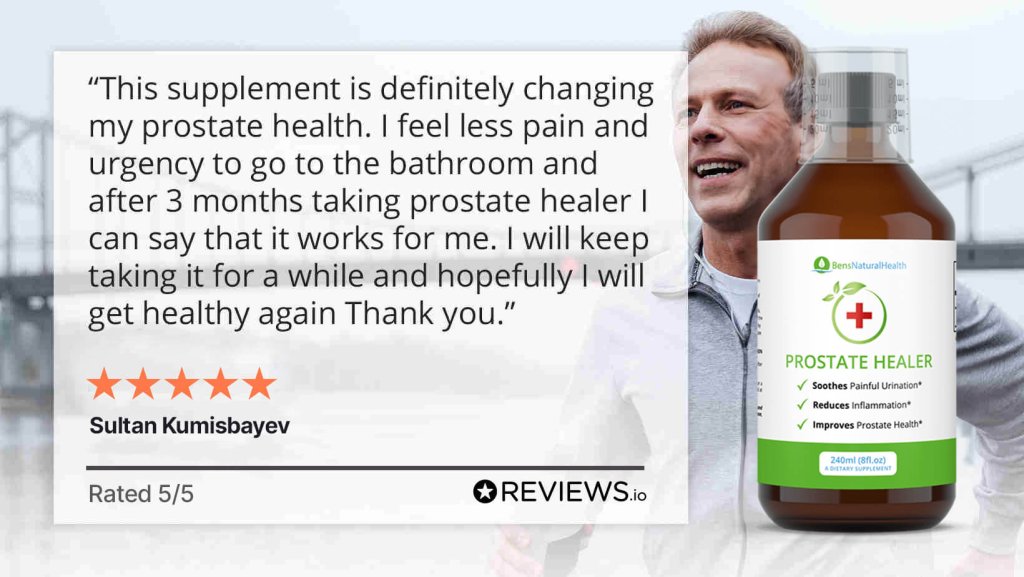- What antibiotics are used to treat prostatitis?
- Side effects and risks of antibiotics
- How to reduce side effects of antibiotics
- When are antibiotics needed to treat prostatitis?
- When are antibiotics not needed for prostatitis?
- How to reduce unnecessary uses of antibiotics for prostatitis
- Will prostatitis go away with antibiotics?
- How quickly do antibiotics work for prostatitis?
- Conclusion
- Source
One of the most important organs for male sexual health is the prostate gland.
Prostatitis is an inflammatory disease of the prostate.
It constitutes 25% of urologist visits globally.
Inflammation of the prostate may be caused by a bacterial infection.
But in some cases, the inflammation may also be due to immunological processes not associated with an infection.
Therefore, according to the National Institutes of Health, we can describe different categories of prostatitis upon diagnosis:
- Acute bacterial prostatitis, or category I, is an acute infection of the prostate.
- Chronic bacterial prostatitis, or category II, is a recurrent infection of the prostate.
- Chronic nonbacterial prostatitis/chronic pelvic pain syndrome, or category III, in which there is no detectable infection, and there may not even be evidence of inflammation.
- Asymptomatic inflammatory prostatitis, or category IV, in which the prostate is inflamed but does not cause any symptoms. So, these patients do not have a fever, blood in the semen, or urinary problems but have a positive result in semen culture obtained through ejaculation.
As you will see further, these diagnoses are essential to choosing the treatment course.
In this article, we will examine in detail the treatment for prostatitis.
We will be looking at different types of prostatitis and see how the choice of an antibiotic or other medications depends on that.
We will also answer some questions of interest: What antibiotics are used to treat prostatitis? How long does prostatitis last with antibiotics?
What antibiotics are used to treat prostatitis?
As expected, antibiotics used for prostatitis mainly work in category I and II, i.e., when bacterial infections are present.
The best antibiotic for prostatitis is chosen depending on the category and whether the infection is complicated or not.
Antibiotics for acute prostatitis
Within category I, uncomplicated acute prostatitis is usually treated with oral fluoroquinolone antibiotics or trimethoprim-sulfamethoxazole (TMP-SMX). Broad-spectrum penicillin derivatives or a third-generation cephalosporin may also be used.
As for quinolones, these have been shown to reach up to four times higher intraprostatic concentrations than beta-lactams.
Within category I, we also have complicated acute prostatitis. For example, a patient hospitalized with sepsis.
In this case, the approach will include IV antibiotics for prostatitis. The most common are fluoroquinolones, which are combined here with an aminoglycoside.
For more information on the antibiotics used in complicated acute prostatitis, you can consult the following table based on a recent scientific review on prostatitis therapeutics:
| Distinguishing traits | Antibiotics used | Commentaries |
| Sepsis | Fluoroquinolone plus an aminoglycoside. You can use a cephalosporin or penicillin derivative as a third IV antibiotic. | Patients should be hospitalized and closely monitored. After recovery, oral antibiotics are prescribed for up to 4 weeks. |
| Prostatic abscess | Fluoroquinolone in stable patients. Cephalosporin, aztreonam, or aminoglycoside plus ampicillin in unstable patients. | A prostatic abscess larger than 2 cm should receive surgery as a first-line treatment. |
| Sexually transmitted infections | A cephalosporin for N. gonorrhea; doxycycline or azithromycin for Ch. trachomatis. | Treatment usually lasts 10 days in these cases. |
| Genitourinary tuberculosis | Isoniazid, rifampicin, and pyrazinamide. It can also include streptomycin or ethambutol as a fourth antibiotic. | Baseline treatment lasts 2 months, followed by 4 months of isoniazid and rifampicin three times a week. |
Antibiotics for chronic prostatitis
Category II includes chronic bacterial prostatitis. The selection of antibiotics for chronic prostatitis is a little more complicated because very few oral antibiotics have sufficient penetration in the prostate tissue to be effective in these prostatitis cases.
Therefore, a culture is required, and a decision is made after microbiological evaluation regarding which antibiotic to use.
For example, linezolid and moxifloxacin are used against a gram-positive organism.
Fluoroquinolones, macrolides, and even fosfomycin can be used against gram-negative organisms such as Escherichia coli, depending on the sensitivity to the antibiotic.
Azithromycin with levofloxacin is usually used against atypical organisms such as chlamydia.
More recently, a study was made involving Cutibacterium acnes, an atypical organism that is becoming prevalent in chronic prostatitis.
In this study, researchers explored the use of clindamycin as an antibiotic candidate, reporting that it might be effective in clearing the infection.
Sign Up For Our Newsletter!
- Receive 10% off our best-selling supplements
- Get Your FREE PSA Lowering Diet Plan
- Be the first to hear about sales and promotions
- Stay up to date on our latest health news
Side effects and risks of antibiotics
As is to be expected, antibiotics, as well as other drugs, have different adverse effects. For example:
- Headache, especially with fosfomycin, quinolones, and some penicillin derivatives.
- Digestive problems, such as abdominal pain, nausea, vomiting, and diarrhea. This occurs because the antibiotic sweeps away the intestinal flora. However, this effect should last up to a few days.
- Photosensitivity, i.e., sensitivity to light which may cause skin irritation in some cases. It is common in quinolones and trimethoprim-sulfamethoxazole.
- Yeast infections, especially vaginal candidiasis, as the antibiotic destroys the normal flora of the vagina. This makes it more susceptible to some types of fungi.
- Tendon damage, which is one of the less common adverse effects of levofloxacin.
We must also consider the risk of allergic reactions, especially when using penicillin derivatives.
Allergic reactions to antibiotics can be severe enough to cause anaphylaxis with difficulty breathing. This medical emergency can cause death if not treated in time.
How to reduce side effects of antibiotics
Adverse effects of antibiotics are sometimes difficult to avoid. Most are not severe enough to discontinue the use of the antibiotic.
However, if they ever become bothersome, it is advisable to discuss them with your healthcare provider.
To decrease the intensity of adverse effects, you could try the following:
- Take antibiotics as recommended by your physician. If your prescribing doctor has recommended taking them with food and you take them while fasting, you may increase the gastrointestinal adverse effects.
- Complete all days of therapy, even if your symptoms improve ahead of time. By not taking the full course of antibiotics, you could be creating resistance in the bacteria.
- Avoid alcohol consumption. Some medications have an adverse reaction to alcohol, such as trimethoprim-sulfamethoxazole. Others increase in concentration or decrease their effectiveness when taken with alcohol.
- Take probiotics. Probiotics contain healthy bacteria that replace those swept by the antibiotic. By maintaining a continuous replacement of the intestinal flora, you avoid some types of antibiotic diarrhea.
When are antibiotics needed to treat prostatitis?
As mentioned above, different antibiotics are used depending on the prostatitis type. Some of them are caused by bacteria. Others are simply inflammatory diseases, and some variants may not even have conventional signs of prostate gland inflammation.
Antibiotics are prescribed only for bacterial prostatitis. In some cases, it will be necessary to perform a bacteriological study to identify the exact bacteria and antibiotic sensitivity.
When are antibiotics not needed for prostatitis?
There are prostatitis cases not triggered by bacteria, which would not require antibiotics.
For example, chronic pelvic pain syndrome may be due to inflammation in the prostatic area or other damage to nearby organs that may cause similar symptoms.
As for asymptomatic prostatitis, there is debate about whether it should be treated with antibiotics, and it is known to increase PSA levels in men.

How to reduce unnecessary uses of antibiotics for prostatitis
The most important recommendation for patients is not to use antibiotics without their doctor’s prescription.
You might have symptoms of prostatitis, such as burning during urination, urinary urgency, increased urinary frequency, and nocturia, among others.
Even so, you should go to your doctor to identify whether it is a urinary tract infection or prostatitis, and if it is prostatitis, whether it is bacterial or not.
In the case of physicians, a bacteriological study should be performed to select the antibiotic that will work for each patient precisely.
This is especially important in chronic bacterial prostatitis, i.e., when the infection and symptoms are recurrent after apparently having been cured.
This type of study will improve the sensitivity of antibiotic therapy and avoid the unnecessary use of antibiotic combinations.
Will prostatitis go away with antibiotics?
Acute and chronic bacterial prostatitis get better after treatment with antibiotics. This depends on your adherence to medical treatment and your physician’s choice of antibiotic.
Some bacterial strains may have antibiotic resistance, so sometimes the treatment plan must be changed. However, if it is a bacterium causing the inflammation, it will improve over time.
Still, it can be very frustrating for some patients with chronic prostatitis and chronic pelvic pain syndrome, especially since they have recurrent, sometimes very intense symptoms. In some cases, they have gone through antibiotic therapy without success.
If this is your case, you must go through a diagnostic process to determine the source of your symptoms.
Therapy in these cases can often seem erratic and difficult to understand until empirical treatment finds the cause and patients improve their condition.

How quickly do antibiotics work for prostatitis?
If you are on a course of antibiotic treatment, your symptoms will most likely improve progressively as the days go by.
Some patients experience almost immediate improvement after taking their first few doses. If this occurs in your case, do not stop taking the antibiotic for the allotted time.
Most patients notice improvement after five days to a week of medical treatment. Sometimes, a longer time will be required, especially in complicated prostatitis.
For example, in acute complicated prostatitis, treatment may require hospitalization. Upon discharge from the hospital, the patient still needs oral antibiotics for up to four weeks.
And in the case of chronic bacterial prostatitis, antimicrobial therapy may extend even for months.
However, most patients experience improvements even before the last dose of antibiotics is completed.
Thus the importance to emphasize the need to complete your treatment to avoid recurrences and bacterial resistance.
Conclusion
Prostatitis is an inflammation of the prostate, which a bacterial infection can cause. There are different types of prostatitis, among which are acute prostatitis and chronic bacterial prostatitis.
There is also prostatitis not associated with infection, in which antibiotic treatment is not indicated.
The most commonly used antibiotics are quinolones since they reach an optimal level in the prostatic tissue.
Penicillin derivatives, aminoglycosides, fosfomycin, and macrolides, among others, can also be used.
The choice of antibiotic for prostatitis often depends on the culture of prostatic secretions, especially in cases of chronic prostatitis or recurrent symptoms.
It is essential to follow the course of medical treatment to the end to prevent symptoms from returning and to avoid developing bacterial resistance to antibiotic treatment.
Explore More







